There are many animals that start with n. Some of these animals include the Narwhal, nighthawk, the nightingale, and the nimble-footed nymph. Other animals that have names that start with “n” include the northern nemesis, the numbat, and the Norwegian rat. However, all of these animals have something special about them that makes them worth learning about.
Animals That Start With N
Nurse Shark

Kingdom: Animalia
Phylum: Chordata
Class: Chondrichthyes
Order: Orectolobiformes
Family: Ginglymostomatidae
Genus: Ginglymostoma
Scientific Name: Ginglymostoma cirratum
Fun Fact: Commonly found in Central American waters!
Nurse sharks have smoother skin than most sharks. It feels like sandpaper. These gentle creatures are often referred to as the couch potatoes of the sea. Nurse sharks are large and peaceful, leisurely drifting along the ocean floor in shallow waters. They suck up food as they go, displaying their unique feeding behavior. While they hunt alone at night, nurse sharks return to the same comfortable spots during the day.
Newt

Kingdom: Animalia
Phylum: Chordata
Class: Amphibia
Order: Caudata
Family: Salamandridae
Genus: Various
Scientific Name: Various
Fun Fact: Exhibits an interesting life cycle with aquatic and terrestrial stages!
The newt is an intriguing amphibian belonging to the salamander family. They are known for their unique life cycle, which includes distinct aquatic and terrestrial stages. Newts start their lives as larvae with gills, living in water. As they grow, they undergo metamorphosis into a juvenile terrestrial stage called an eft. The eft stage possesses lungs for breathing on land. Eventually, they transform again and return to the water in their adult stage to reproduce. This remarkable life cycle sets newts apart and adds to their allure.
Nile Crocodile
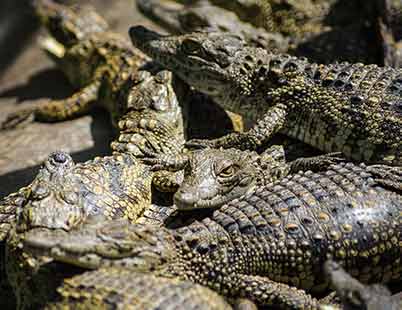
Kingdom: Animalia
Phylum: Chordata
Class: Reptilia
Order: Crocodylia
Family: Crocodylidae
Genus: Crocodylus
Scientific Name: Crocodylus niloticus
Fun Fact: Known for its incredible strength and stealthy hunting skills!
The Nile crocodile is a formidable reptile and one of the largest crocodile species in the world. Found throughout sub-Saharan Africa, it is known for its incredible strength and stealthy hunting abilities. The Nile crocodile is a patient predator, often lying in wait near water bodies for unsuspecting prey to approach. With its powerful jaws and muscular physique, it is a true apex predator of the African continent.
Nudibranch

Kingdom: Animalia
Phylum: Mollusca
Class: Gastropoda
Order: Nudibranchia
Family: Various
Genus: Various
Scientific Name: Various
Fun Fact: Exhibits breathtakingly vibrant colors and intricate patterns!
Nudibranchs, also known as sea slugs, are mesmerizing creatures found in marine environments worldwide. These soft-bodied gastropods showcase a vast array of vibrant colors and intricate patterns, making them a favorite among divers and underwater photographers. Nudibranchs are known for their diverse feeding habits, with some species using venomous cells to prey on other organisms, while others feed on sponges or algae. Their unique appearance and stunning beauty have earned them a rightful place among the wonders of the sea.
Nutria

Kingdom: Animalia
Phylum: Chordata
Class: Mammalia
Order: Rodentia
Family: Myocastoridae
Genus: Myocastor
Scientific Name: Myocastor coypus
Fun Fact: Possesses webbed hind feet, perfect for a semi-aquatic lifestyle!
Nutrias, also known as coypus, are semi-aquatic rodents native to South America. They have adapted to life in and around water, with webbed hind feet that aid in swimming. Nutrias are known for their thick, waterproof fur, which helps keep them warm in their aquatic habitats. These herbivorous mammals play a vital role in wetland ecosystems and have been introduced to various regions around the world.
Nene

Common Name: Nene or Hawaiian Goose
Kingdom: Animalia
Phylum: Chordata
Class: Aves
Order: Anseriformes
Family: Anatidae
Genus: Branta
Scientific Name: Branta sandvicensis
Fun Fact: The nene has unique, partially webbed feet, perfect for navigating Hawaii’s rocky volcanic terrain!
Nene, also known as the Hawaiian goose, is a remarkable bird that holds the title of Hawaii’s state bird. Endemic to the Hawaiian Islands, it is one of the rarest geese in the world. The nene is well-adapted to the volcanic landscape, with sturdy feet and sharp claws for traversing rugged terrain. Once on the brink of extinction, conservation efforts have helped revive the population, making the nene a symbol of hope and resilience.
Nighthawk

Kingdom: Animalia
Phylum: Chordata
Class: Aves
Order: Caprimulgiformes
Family: Caprimulgidae
Genus: Chordeiles
Scientific Name: Chordeiles minor
Fun Fact: Known for their impressive aerial acrobatics and distinctive call!
Nighthawks are intriguing nocturnal birds renowned for their exceptional flying skills and distinctive calls. These insectivorous birds have long, pointed wings that allow them to perform impressive aerial acrobatics as they swoop and dive in pursuit of flying insects. Nighthawks are mostly active during dawn and dusk, and their distinctive “peent” call can often be heard as they patrol the skies.
Narwhal
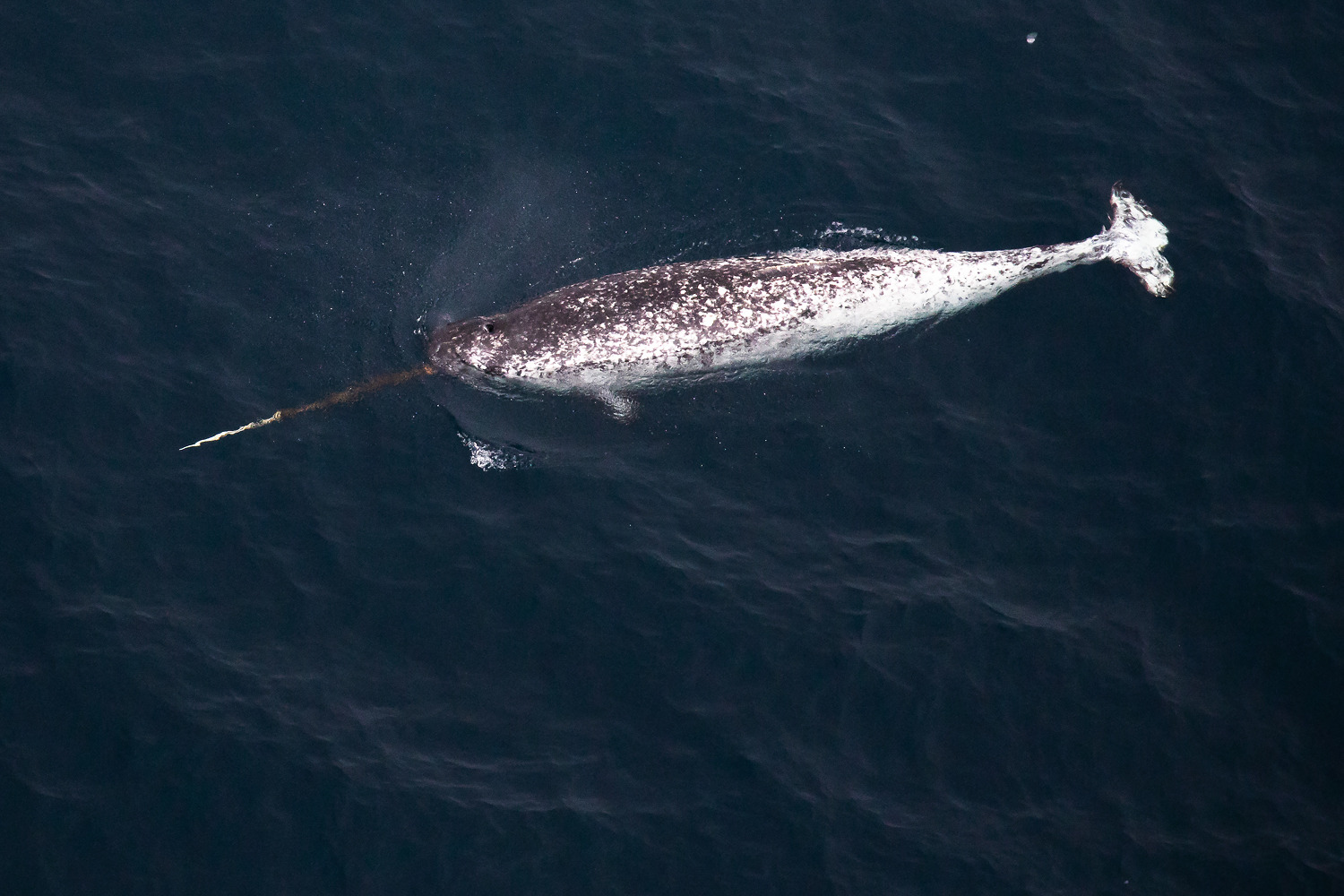
Kingdom: Animalia
Phylum: Chordata
Class: Mammalia
Order: Cetacea
Family: Monodontidae
Genus: Monodon
Scientific Name: Monodon monoceros
Fun Fact: Possesses a long, spiral tusk that can grow up to 10 feet!
The narwhal, often referred to as the “unicorn of the sea,” is a medium-sized whale found in Arctic waters. Males are known for their long, spiraled tusks that can grow up to 10 feet in length. These tusks are actually elongated canine teeth and serve multiple purposes, including display, aggression, and navigation. Narwhals have a specialized diet of fish and squid, and their unique appearance has made them a subject of fascination and myth for centuries.
Nyala

Kingdom: Animalia
Phylum: Chordata
Class: Mammalia
Order: Artiodactyla
Family: Bovidae
Genus: Tragelaphus S
cientific Name: Tragelaphus angasii
Fun Fact: Display striking sexual dimorphism with males sporting impressive spiral horns!
Nyala is an antelope species native to southern Africa. These majestic creatures are known for their striking sexual dimorphism, with males displaying a dark brown coat adorned with white vertical stripes and impressive spiral horns. In contrast, females have a lighter reddish-brown coat. Nyala prefer dense woodlands and are adept at leaping through vegetation with their long legs. They mostly eat leaves, fruits, and twigs, which they find while moving through their woodland habitat.
Nectar Bat
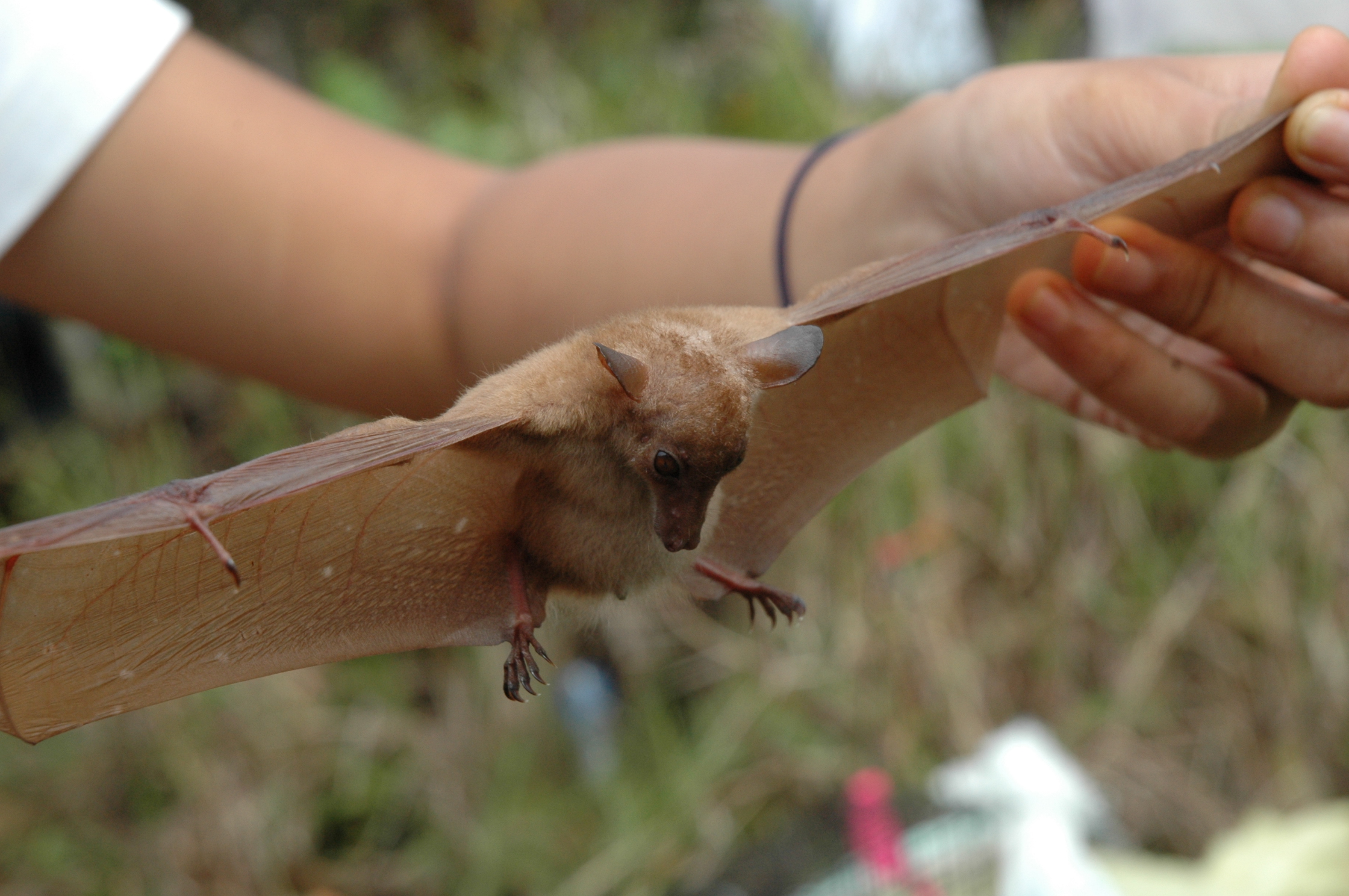
Kingdom: Animalia
Phylum: Chordata
Class: Mammalia
Order: Chiroptera
Family: Pteropodidae
Genus: Eonycteris
Scientific Name: Eonycteris spelaea
Fun Fact: Plays a crucial role in pollinating various plants in tropical regions!
Nectar bats, also known as blossom bats or flying foxes, are fascinating mammals found in tropical regions of Southeast Asia. These fruit bats have a unique adaptation to their diet, with elongated tongues and specialized teeth that allow them to extract nectar from flowers. As they feed on nectar, they inadvertently transfer pollen from one flower to another, playing a crucial role in pollination. Nectar bats are important for maintaining the biodiversity of tropical ecosystems.
Nilgai

Kingdom: Animalia
Phylum: Chordata
Class: Mammalia
Order: Artiodactyla
Family: Bovidae
Genus: Boselaphus
Scientific Name: Boselaphus tragocamelus
Fun Fact: Known as the largest Asian antelope and often referred to as the “blue bull”!
The Nilgai, often referred to as the blue bull, stands as the largest antelope species across the Indian subcontinent.. Males showcase a bluish-gray coat, while females display a lighter sandy-brown coloration. Nilgai are known for their robust build and impressive horns, which are more prominent in males. These herbivorous animals primarily inhabit grasslands and open forests, where they graze on a variety of vegetation.
Nandu

Kingdom: Animalia
Phylum: Chordata
Class: Aves Order: Rheiformes
Family: Rheidae
Genus: Rhea
Scientific Name: Rhea americana
Fun Fact: The second-largest bird species in the world after the ostrich!
The Nandu, also known as the Greater Rhea, is a flightless bird native to South America. It is the second-largest bird species globally, surpassed only by the ostrich. Nandus have long legs, powerful running abilities, and strong claws. These omnivorous birds inhabit grasslands and feed on various plant matter, small animals, and insects. They are known for their elaborate courtship rituals and the communal care of their young.
Neanderthal

Kingdom: Animalia
Phylum: Chordata
Class: Mammalia
Order: Primates
Family: Hominidae
Genus: Homo
Species: Homo neanderthalensis
Fun Fact: An extinct species of hominins closely related to modern humans!
The Neanderthal is an extinct species of human-like beings known as hominins. These ancient creatures lived in Eurasia from approximately 400,000 to 40,000 years ago. Neanderthals are closely related to modern humans, and evidence suggests some degree of interbreeding between the two groups. They had a robust build, distinctive facial features, and a culture that included tool-making and burial rituals. The study of Neanderthals provides invaluable insights into our evolutionary history.
Northern Pike

Kingdom: Animalia
Phylum: Chordata
Class: Actinopterygii
Order: Esociformes
Family: Esocidae
Genus: Esox
Scientific Name: Esox lucius
Fun Fact: An aggressive freshwater fish known for its sharp teeth and voracious appetite!
The Northern Pike is a predatory fish found in freshwater ecosystems of North America, Europe, and parts of Asia. These fish are characterized by their elongated bodies, olive-green coloration, and rows of sharp teeth. Northern Pike are ambush predators, lurking in vegetation or near structures in the water, waiting to strike at unsuspecting prey. They are known for their aggressive nature, making them popular targets for sport fishing.
Numbat

Kingdom: Animalia
Phylum: Chordata
Class: Mammalia
Order: Dasyuromorphia
Family: Myrmecobiidae
Genus: Myrmecobius
Scientific Name: Myrmecobius fasciatus
Fun Fact: Feeds almost exclusively on termites!
The numbat is a small marsupial native to Western Australia. With its vibrant reddish-brown fur and distinct white stripes, it is a sight to behold. The numbat is an insectivorous animal and primarily feeds on termites. It has a long, slender tongue that it uses to lap up termites from their mounds. Numbats are diurnal, meaning they are active during the day, and they spend a significant amount of time hunting for their favorite food.
Naked Mole Rat
Kingdom: Animalia
Phylum: Chordata
Class: Mammalia
Order: Rodentia
Family: Bathyergidae
Genus: Heterocephalus
Scientific Name: Heterocephalus glaber
Fun Fact: Exceptionally adapted to life in underground colonies!
The naked mole rat is a fascinating rodent species that stands out due to its unique appearance and remarkable adaptability. It has wrinkled, hairless skin, small eyes, and large incisor teeth. Naked mole rats are well-suited for life in underground colonies, as they can tolerate high levels of carbon dioxide and are resistant to cancer. They live in complex social structures led by a queen and display cooperative behavior within their colonies.
Nightingale

Kingdom: Animalia
Phylum: Chordata
Class: Aves
Order: Passeriformes
Family: Muscicapidae
Genus: Luscinia
Scientific Name: Luscinia megarhynchos
Fun Fact: Known for their beautiful, melodious songs that fill the night!
The nightingale is a small, migratory bird celebrated for its enchanting song. Male nightingales produce complex and melodious tunes, often singing throughout the night to attract mates and establish territories. These birds have plain brown feathers, allowing them to blend into their surroundings easily. Nightingales inhabit woodlands, thickets, and gardens, where they forage for insects and occasionally fruits. Their captivating songs have inspired poets and musicians throughout history.
Northern Gannet

Kingdom: Animalia
Phylum: Chordata
Class: Aves
Order: Suliformes
Family: Sulidae
Genus: Morus
Scientific Name: Morus bassanus
Fun Fact: Engages in spectacular diving displays to catch fish!
The northern gannet is a large seabird that inhabits the coasts of the North Atlantic. These birds are known for their impressive diving abilities. From great heights, they plunge into the water at high speeds to catch fish. Northern gannets have a white body, black wingtips, and a yellowish head. They breed in large colonies, nesting on cliffs and rocky islands. These elegant birds are a true spectacle to witness in their natural habitat.
Namib Desert Beetle

Kingdom: Animalia
Phylum: Arthropoda
Class: Insecta
Order: Coleoptera
Family: Tenebrionidae
Genus: Stenocara
Scientific Name: Stenocara gracilipes
Fun Fact: Possesses unique adaptations to collect water in the desert!
The Namib Desert Beetle is a remarkable insect that has evolved specialized adaptations to survive in one of the driest places on Earth. Its unique exoskeleton has a pattern of bumps and channels that allow it to collect moisture from the fog that rolls in from the Atlantic Ocean. The beetle positions itself in a way that allows water droplets to condense on its body and flow into its mouth. This incredible adaptation helps it thrive in the harsh desert environment.
Night Monkey

Kingdom: Animalia
Phylum: Chordata
Class: Mammalia
Order: Primates
Family: Aotidae
Genus: Aotus
Scientific Name: Aotus trivirgatus
Fun Fact: Nocturnal primates with large, expressive eyes!
Night monkeys, also known as owl monkeys, are a group of small, nocturnal primates native to Central and South America. Their large, round eyes are perfectly adapted for low-light conditions, allowing them to see clearly in the dark.. Night monkeys are unique among primates as they are entirely nocturnal, using their sharp hearing and keen eyesight to navigate and locate prey in the dark. They are arboreal animals, spending most of their lives in the trees and feeding on fruits, insects, and small vertebrates.
Namaqua Chameleon

Kingdom: Animalia
Phylum: Chordata
Class: Reptilia
Order: Squamata
Family: Chamaeleonidae
Genus: Chamaeleo
Scientific Name: Chamaeleo namaquensis
Fun Fact: Possesses the ability to change color for camouflage and thermoregulation!
The Namaqua chameleon is a fascinating reptile found in the deserts of southwestern Africa. This chameleon species is renowned for its remarkable ability to change color, not only for camouflage but also for thermoregulation. It has independently moving eyes, a prehensile tail, and specialized feet for gripping branches. The Namaqua chameleon feeds on a variety of insects and small invertebrates, using its long, sticky tongue to capture prey.
Northern Fur Seal
Kingdom: Animalia
Phylum: Chordata
Class: Mammalia
Order: Carnivora
Family: Otariidae
Genus: Callorhinus
Scientific Name: Callorhinus ursinus
Fun Fact: Males have a distinctive mane of coarse guard hairs during the breeding season!
The northern fur seal is a marine mammal that inhabits the northern Pacific Ocean, primarily in the Bering Sea and the Sea of Japan. These seals have dense, waterproof fur that helps them survive in cold waters. Males develop a thick mane of coarse guard hairs on their neck and shoulders during the breeding season. Northern fur seals are highly social animals, forming large colonies on rocky shores. They are skilled swimmers and feed primarily on fish and squid.
Nubian Ibex
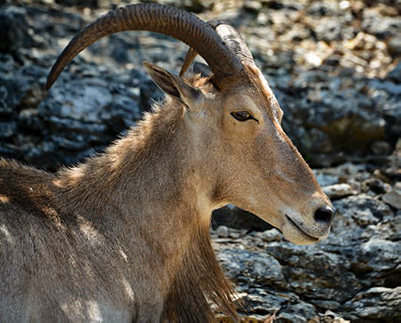
Kingdom: Animalia
Phylum: Chordata
Class: Mammalia
Order: Artiodactyla
Family: Bovidae
Genus: Capra
Scientific Name: Capra nubiana
Fun Fact: Possesses impressive, curved horns adapted for climbing steep cliffs!
The Nubian ibex is a species of wild goat found in rugged mountainous regions of North Africa and the Middle East. These agile and sure-footed creatures have adapted to rocky terrains, where they climb steep cliffs with ease. Nubian ibex have striking curved horns, which are larger and more impressive in males. These herbivorous animals feed on a variety of plants and can withstand long periods without water by relying on the moisture content in their food.
branchs come in various shapes and sizes, and they display an array of fascinating adaptations. These captivating creatures can be found in oceans around the world, inhabiting reefs, rocky shores, and seagrass beds. Their beauty and diversity make them a favorite subject for underwater photographers and divers.
Nicobar Pigeon

Kingdom: Animalia
Phylum: Chordata
Class: Aves
Order: Columbiformes
Family: Columbidae
Genus: Caloenas
Scientific Name: Caloenas nicobarica
Fun Fact: Recognized for its vibrant and iridescent plumage!
The Nicobar pigeon is a stunning bird found in the Nicobar Islands and parts of Southeast Asia. It is known for its vibrant plumage, featuring a metallic green and coppery sheen, with a white tail and bronze feathers on the wings. Nicobar pigeons are relatively large, measuring around 16 inches in length. They inhabit forests and coastal areas, often near mangroves. These pigeons feed on a variety of fruits, seeds, and insects. Due to habitat loss and hunting, the Nicobar pigeon is considered near threatened and is protected in several areas.
Night Adder
Kingdom: Animalia
Phylum: Chordata
Class: Reptilia
Order: Squamata
Family: Viperidae
Genus: Causus
Scientific Name: Causus rhombeatus
Fun Fact: A venomous snake known for its nocturnal habits!
The Night Adder, also known as the rhombic night adder, is a venomous snake species native to Sub-Saharan Africa. It is a relatively small snake, with adults reaching lengths of around 1.6 to 2.3 feet. The Night Adder has a robust body, a triangular-shaped head, and distinct scales that give it a rough appearance. It is primarily active during the night, hence its name. These snakes inhabit a variety of habitats, including grasslands, savannas, and forests. Night Adders are ambush predators, feeding on small mammals, birds, and lizards. While their venom is potent, they are not considered highly dangerous to humans.
Night Heron
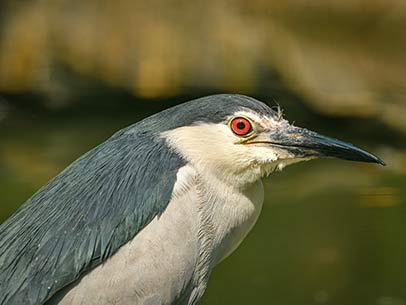
Kingdom: Animalia
Phylum: Chordata
Class: Aves
Order: Pelecaniformes
Family: Ardeidae
Genus: Nycticorax
Scientific Name: Nycticorax nycticorax
Fun Fact: Nocturnal birds with distinctive red eyes!
Night herons are a group of medium-sized heron species distributed globally. They are known for their crepuscular and nocturnal behavior, being most active during the twilight hours. One of the most widespread species is the Black-crowned Night Heron. These birds have a stocky body, short legs, and a thick neck. They have a distinctive black crown, gray wings, and a white or light-colored underside. Night herons inhabit a range of wetland habitats, including marshes, swamps, and riverbanks. They feed primarily on fish, crustaceans, and amphibians. Night herons are highly adaptable and can be found in urban parks and gardens.
Nightjar
Kingdom: Animalia
Phylum: Chordata
Class: Aves
Order: Caprimulgiformes
Family: Caprimulgidae
Genus: Caprimulgus
Scientific Name: Caprimulgus europaeus
Fun Fact: Nocturnal birds with intricate camouflaged plumage!
Nightjars, also known as goatsuckers, are a group of nocturnal birds with a unique appearance and behavior. These birds have cryptic plumage, with intricate patterns that blend seamlessly with their surroundings, making them difficult to spot during the day. Nightjars have a wide mouth with a large gape, allowing them to catch flying insects on the wing. They are primarily crepuscular and nocturnal, with a preference for open habitats such as heathlands, forests, and savannas. Nightjars are distributed globally, with various species inhabiting different regions. Their haunting and distinctive calls add to their mystique.
Nile Monitor

Kingdom: Animalia
Phylum: Chordata
Class: Reptilia
Order: Squamata
Family: Varanidae
Genus: Varanus
Scientific Name: Varanus niloticus
Fun Fact: One of the largest lizard species in Africa!
The Nile monitor is a large and powerful lizard native to sub-Saharan Africa. It is one of the largest lizard species on the continent, with some individuals reaching lengths of over 7 feet. Nile monitors have a long and muscular body, a slender tail, and sharp claws. They are excellent swimmers and climbers, capable of adapting to various habitats, including wetlands, rivers, and forests. Nile monitors are opportunistic predators, feeding on a wide range of prey such as fish, birds, mammals, and even eggs. They are known for their intelligence, agility, and ability to thrive in both natural and urban environments.
Conclusion
Exploring animals that start with ‘N’ reveals a fascinating variety of unique creatures, each with its own distinct traits and adaptations. Whether you’re an animal enthusiast or just curious to learn more, discovering these animals can be both fun and informative. Hopefully, this list gave you some interesting insights into these amazing species. Next time you’re curious about animals whose names begin with ‘N,’ refer back to this guide for inspiration.
You can also read about Ultimate List: 37 Animals That Start with I
Image Source
Narwhal: пресс-служба ПАО “Газпром нефть”, CC BY-SA 4.0 https://creativecommons.org/licenses/by-sa/4.0, via Wikimedia Commons https://commons.wikimedia.org/wiki/File:%D0%9D%D0%B0%D1%80%D0%B2%D0%B0%D0%BB_%D0%B2_%D1%80%D0%BE%D1%81%D1%81%D0%B8%D0%B9%D1%81%D0%BA%D0%BE%D0%B9_%D0%90%D1%80%D0%BA%D1%82%D0%B8%D0%BA%D0%B5.jpg
Nectar Bat: http://sanisidro.gov.ph/mt-hamiguitan/, Public domain, via Wikimedia Commons
https://commons.wikimedia.org/wiki/File:Macroglossus_minimus_pregnant.jpg
Naked Mole Rat: Ltshears – Trisha M Shears Naked Molerat Heterocephalus glaber eating
Night Monkey: Stavenn, CC BY-SA 3.0 http://creativecommons.org/licenses/by-sa/3.0/, via Wikimedia Commons


